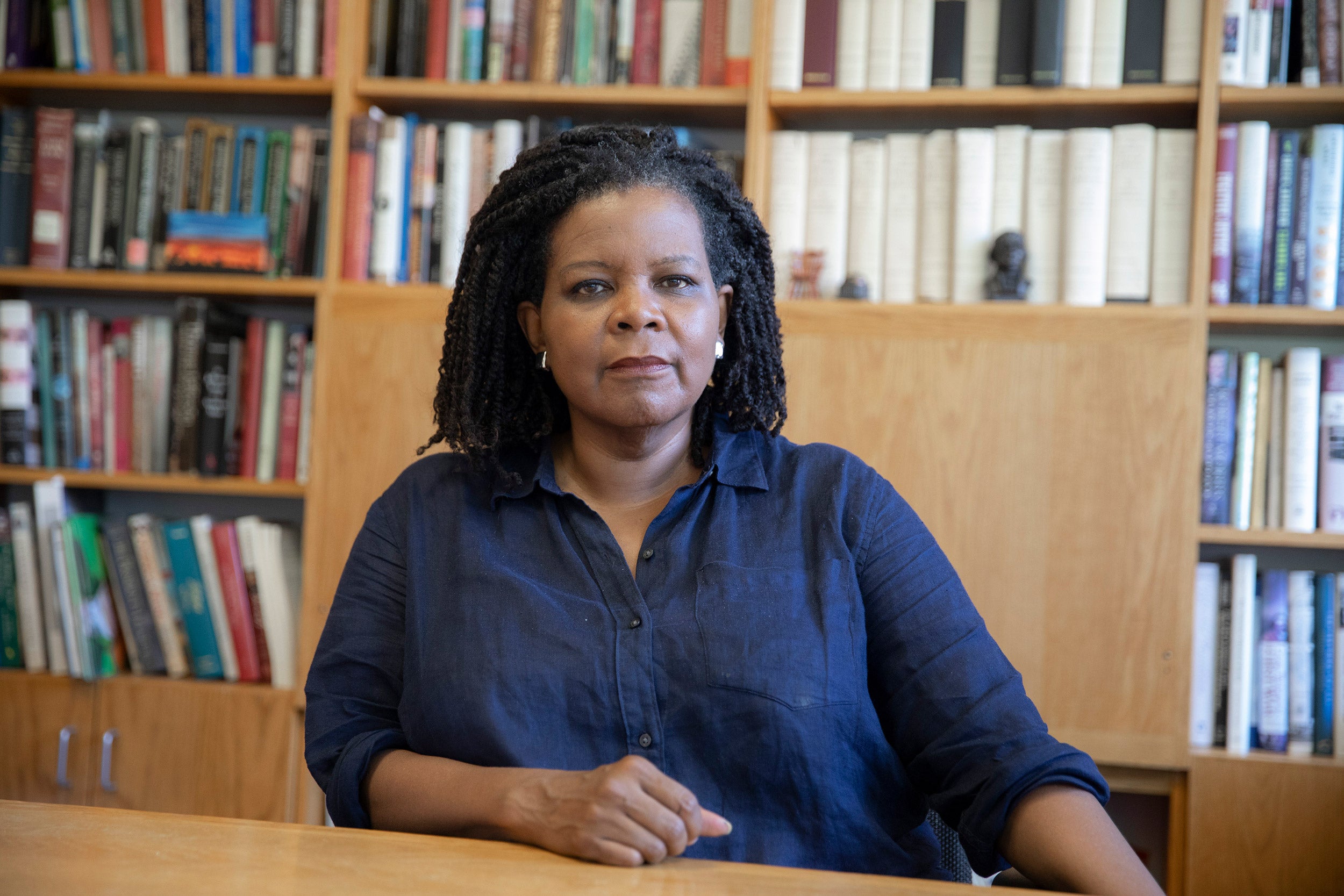On August 23, Harvard Law School unveiled its new shield, which was researched and developed over the past year by a working group of faculty, students, alumni, and staff that was led by Annette Gordon-Reed ’84, the Carl M. Loeb University Professor.
Gordon-Reed, who also served on the previous Committee to Study the Shield, spoke with Harvard Law Today about how the working group approached its task, what she and other members learned from extensive focus groups about HLS’ distinguishing features — and how the new shield reflects the mission, values, and diversity of Harvard Law School.
Harvard Law Today: How did the Shield Working Group approach the redesign process?
Annette Gordon-Reed: It was quickly clear that the best possible way to proceed was to work with colleagues to get input from all parts of the HLS community — students, faculty, staff, and alumni. We also knew we needed to enlist some design expertise. There are people who do this kind of thing for a living — thinking about how to create the perfect symbol and envisioning every angle related to the symbol. We consulted with professionals who came and explained their philosophy and how they worked. In the end, we decided to go with PopKitchen and Studio Rainwater.
HLT: I understand the working group held more than two dozen focus groups with members of the HLS community. What did you learn from those conversations?
Gordon-Reed: That was a fascinating process! I have my own visions of what Harvard Law School means, what its properties are. I very much enjoyed hearing other perspectives. There were some things that kept showing up in all the groups — the focus on the size and breadth of the school, the diversity of the classes offered. [The fact that] HLS as a dynamic place that gives people lots of opportunities to pursue a wide variety of things came up over and over.
HLT: What does the new shield represent?
Gordon-Reed: I think it represents the far-reaching nature of the school. The radiating lines suggest a projection to the outside world. We have graduates everywhere, doing all kinds of things. The HLS sphere of influence is so widely spread. Actually, I think it’s suggestive of a jewel, as well.

HLT: What parts of the new shield most appeal to you?
Gordon-Reed: I had originally suggested changing the old shield by adding the word iustitia — justice — to go along with veritas. I was happy to see the word incorporated into the new shield, along with lex – law. Those words — truth, law and justice — are so important to HLS’s mission. People in focus groups mentioned HLS’s deep commitment to public service — among faculty, students, and alums. The words will be eternally important.
HLT: What are your key takeaways from this process? Any lessons learned?
Gordon-Reed: Well, the experience reiterated the real value of collaboration and taking others’ perspectives into account. Working with people who really want to do something good puts extra wind behind the sails of any kind of project.
HLT: In 2016, you served as a member of the Committee to Study the Shield, which ultimately recommended that the previous HLS shield be retired. As a historian, you initially disagreed with that path. How has your experience serving on both committees shaped your current thinking?
Gordon-Reed: Well, I suppose it taught me how to move on. I understood and respected the majority’s opinion and the result. Once the decision was made, the only thing to do was to go forward in the best possible way. I confess I hadn’t thought that I would be the chair of the working group given the task of figuring out what was that best possible way forward. But, I consider it an enormous honor to be involved in the process of choosing the next symbol of Harvard Law School.
